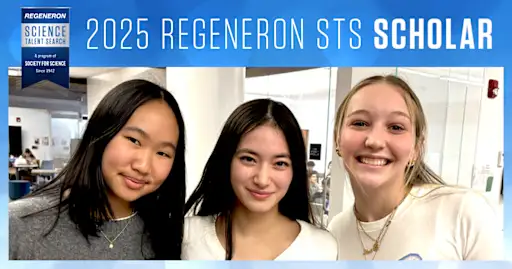1. Astronomers Identify the Universe’s Most Luminous Object: The Record-Breaking Quasar J0529-4351
In the vast expanse of the cosmos, quasars are one of the many celestial bodies that challenge our very understanding of the universe. Powered by supermassive black holes, they consume everything in their path. One such celestial body, the quasar J0529-4351, has been unveiled as the most luminous object in the known universe, with its black hole devouring the equivalent of one sun per day. This astonishing discovery not only surpasses previous records but also opens up new explorations in astrophysics and profound implications that can alter our understanding of the cosmos. Black holes have always been the subject of both fascination and fear, as their immense gravitational pull distorts the very structure of the universe and alters the behavior of nearby objects. The discovery of J0529-4351, a quasar of unparalleled brightness and growth rate, serves as a reminder of the gravitational power of these celestial entities and the vastness of the universe. Scary… and mesmerizing at the same time. Ultimately, delving deeper into the mysteries of J0529-4351 and other distant supermassive black holes offers invaluable insights into the early universe, from the formation and evolution of galaxies to the role of black holes in shaping cosmic structures. Moreover, the sheer size of J0529-4351’s accretion disc—seven light-years in diameter—raises intriguing questions about the upper limits of black hole growth and the energy output of quasars. With new telescope technology in the making, such as the GRAVITY+ upgrade and the Extremely Large Telescope, the study of these awe-inspiring phenomena will only become more accessible. This discovery stands as a testament to the power and beauty of celestial objects, offering an exciting glimpse into the uncharted depths of the cosmos!

2. Mind Over Mouse: Elon Musk’s Neuralink Brain Chip
In a revolutionary leap forward, Neuralink, a groundbreaking company founded by Elon Musk and a team of seven scientists and engineers, has developed a brain-computer interface (BCI) called the Neuralink Brain Chip. Musk and Neuralink have been working on the idea and developing the first prototype during the past few years, and in late November of 2023, they were finally able to conduct their first human clinical trial. This implant works by recording and decoding neural signals from individual neurons, then transmitting them back to the brain via electrical stimulation, essentially allowing users to control devices through the power of thought alone. Neuralink’s primary objective is to enable individuals, particularly those with spinal cord injuries, to regain control over basic functions like moving a computer cursor or typing on a keyboard using just their thoughts. This technology opens up new possibilities for human-computer interactions. Imagine a future where individuals with spinal cord injuries can regain control of their limbs, or where simply thinking about typing a message is enough to make it appear on a screen. However, as with any cutting-edge technology, there are concerns. Firstly, the surgical procedure itself poses risks—the process involves inserting tiny threads into the brain, which can cause inflammation, scarring, or bleeding. Moreover, the long-term impact of having a chip embedded in the brain is not fully understood yet; researchers are still investigating the potential for adverse effects such as seizures or changes in brain function over time. Additionally, there are ethical concerns surrounding the use of the chip, such as its potential for mind-reading or manipulation, as well as issues of privacy and consent. While these ethical and safety concerns are imperative to consider, the potential benefits of this groundbreaking technology are undoubtedly exciting.

3. The Immune System’s Secret Weapon: How T Cells Could Be the Key to Healthier, Longer Lives
Scientists at Cold Spring Harbor Laboratory have utilized the power of the immune system to potentially combat aging and age-related diseases. The secret lies within T cells, vital defenders of the immune system, which can now be genetically reprogrammed to target and eliminate senescent cells—cells that have stopped replicating and accumulate in the body as it ages, causing inflammation and contributing to various diseases. While existing drugs can eliminate these cells, they often require repeated administration. In contrast, the innovative approach of using CAR T cells—a “living drug”—offers a more enduring solution. CAR (chimeric antigen receptor) T cells are genetically modified white blood cells that can be engineered to recognize and destroy specific target cells. In this case, scientists have designed CAR T cells to target senescent cells in mice, and after administering these T cells into the mice during the clinical trials, the scientists observed remarkable improvements in health, including lower body weight, better metabolism, and increased physical activity in the mice. The most fascinating aspect of this discovery is the longevity of CAR T cells. A single treatment in young mice can have life-long effects, protecting against common age-related conditions like obesity and diabetes. This is because T cells have a unique ability to develop memory and persist in the body for extended periods, offering a long-term solution for chronic health issues. With further research, CAR T cell therapy could revolutionize how age-related health issues are approached, offering a potential one-time treatment that promotes healthier and potentially longer lives!

4. Chemists Synthesize Unique Anticancer Molecules Using a Novel Approach
Thirty years ago, scientists discovered a unique class of anticancer molecules in bryozoans, a type of marine invertebrate that is found in tropical waters. These compounds, made by a complex network of oxidized rings and nitrogen atoms, hold a great potential for cancer treatment due to their unique structure. Their intricate molecular structure allows them to interact with specific cellular targets, inhibiting cancer cell growth and promoting cell death. The structural complexity also makes these compounds less susceptible to resistance development by cancer cells, which is a common challenge in many existing cancer treatments. However, these intricate structures also posed a significant challenge for scientists to recreate them in the laboratory from scratch, hindering their potential therapeutic applications. Since then, researchers worldwide have attempted to synthesize these molecules, but the dense and highly reactive nature of their structures has made it a daunting task. Recently, however, a team of Yale chemists has achieved a groundbreaking breakthrough, successfully synthesizing eight of these complex compounds using an approach that combines innovative chemical strategies with cutting-edge technology. The team’s approach involve a series of strategic operations, including delaying the construction of a reactive ring until the final stages of synthesis, using oxidative photocyclizations to form crucial bonds, and employing the technique of microcrystal electron diffraction analysis to decipher the molecules’ intricate structures. This milestone not only opens new paths for cancer research but also underscores the power of scientific innovation, forging a hopeful step forward in the fight against cancer.








